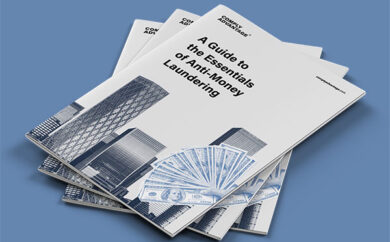 The European Union’s Fifth Anti Money Laundering Directive (5AMLD) came into force across all member states on 10 January 2020. The directive set out a range of requirements and amendments to EU AML legislation, including the introduction of a legal definition of cryptocurrency and reporting thresholds for prepaid credit cards.
The European Union’s Fifth Anti Money Laundering Directive (5AMLD) came into force across all member states on 10 January 2020. The directive set out a range of requirements and amendments to EU AML legislation, including the introduction of a legal definition of cryptocurrency and reporting thresholds for prepaid credit cards.
One of 5AMLD’s key new requirements was the extension of the scope of AML/CFT compliance regulations to art dealers (persons trading or acting as intermediaries in the trade of works of art, including auction houses and galleries). The extension was motivated by insights from previous money laundering directives that indicated criminals were increasingly using the art trade to launder money, exploiting opportunities to conduct high value trades with an almost guaranteed level of anonymity.
New AML Responsibilities
Under the new rules, art dealers must implement the same AML/CFT measures that apply to banks, real estate agents, notaries, and other financial institutions, where the value of a transaction amounts to €10,000 or more. In practice, this means that art dealers must:
- Implement a risk-based AML/CFT program
- Conduct customer due diligence (CDD) checks
- Monitor customer transactions for suspicious activity
- Screen customers against sanctions lists
- Monitor for politically exposed person (PEP) status
- Monitor for adverse media involving customers
- Submit suspicious activity reports (SAR) to the authorities
Money Laundering Methodologies
The art market represents such an attractive target for money launderers because of the status that works of art have within certain communities and the potential to use those works as vehicles to insert illegal funds into the legitimate financial system. The art trade is specifically useful to money laundering methodologies in the following ways:
- Art can be stored in free ports (such as Geneva, Singapore, Monaco, and Delaware) that offer tax advantages, high levels of anonymity, and secrecy.
- Works of art may be sold to offshore countries in locations all over the world.
- Works of art may be purchased with cash.
- Once purchased, works of art do not need to be moved from the ports in which they are stored.
- Art purchases often do not require the disclosure of the ultimate beneficial ownership (UBO) of companies involved.
- The value of artwork can be subjective and works of art can easily be over and undervalued.
Case Study: The Nahmad Family
In 2016, the leaked Panama Papers brought a range of international money laundering activities to light, including numerous crimes involving the art trade.
While it did not involve money laundering, a particular case from the leaked documents illustrated how the anonymity of the art trade helps criminals disguise their identities. The case in question involved well-known art dealers the Nahmad family who had formed a company in Panama called the International Art Centre (IAC) with the assistance of Panamanian law firm Mossack Fonseca. In 1996, the IAC bought the painting “Seated Man with a Cane” by Amadeo Modigliani for $3.2 million in an auction organized by Christie’s of London. In 2011, the painting was subject to a claim in a Nazi-related restitution case however the Nahmad family was able to deny owning the artwork and conceal its beneficial ownership of the IAC. The Panama Papers leak revealed the Nahmad family’s 20 year ownership of the painting along with their ownership of the IAC.
Ongoing AML Compliance
The Nahmad family case illustrates the need to accurately establish and verify customer identities and the beneficial ownership of firms involved in art transactions. Accordingly, 5AMLD regulations ensure that firms involved in the art trade develop and implement effective know your customer (KYC) systems in order to obtain the relevant information from their clients and customers and assist in any subsequent criminal investigations.
Beyond the identification and verification of customers, art dealers have a responsibility to conduct ongoing AML checks and monitoring. Over the course of a business relationship, customers may be added to sanctions lists, become politically exposed persons (PEP), or be the subject of adverse media stories: each eventuality represents a change to the customer’s risk profiles and, by extension, the necessary AML response from the firms dealing with them.
Given the amount of data required by the modern AML process, art traders should carefully consider how to meet their compliance responsibilities and take into account the potential benefits of smart technology tools such artificial intelligence and machine learning models. Smart technology brings automated speed and efficiency to the AML data collection and analysis process: in addition to helping firms detect and address money laundering incidents in a timely manner, smart technology allows firms to implement versatile compliance programs that can deal with emerging criminal behaviors and adapt to new legislation such as the EU’s upcoming 6AMLD.
Download Our 6AMLD Report
Discover how the changes from 6AMLD will affect your business.
Originally published 29 October 2020, updated 22 September 2023
Disclaimer: This is for general information only. The information presented does not constitute legal advice. ComplyAdvantage accepts no responsibility for any information contained herein and disclaims and excludes any liability in respect of the contents or for action taken based on this information.
Copyright © 2025 IVXS UK Limited (trading as ComplyAdvantage).
